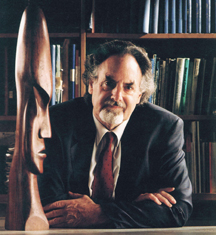Purinergic signalling got off to a slow start after it was proposed in 1972, but now happily the field is expanding rapidly in many different directions. Recent emphasis has been on the pathophysiology of purinergic signalling and its therapeutic potenital for a number of diseases, including thrombosis and stroke, bladder incontinence, osteoporosis, kidney failure, diabetes, pain and cancer. Your latest hypothesis about the therapeutic potential of ATP as an immune modulator for the treatment of HIV/AIDS is very exciting and opens up yet another important avenue for the treatment of disease.
Professor Geoffrey Burnstock PhD DSc FAA FRCS(Hon) FRCP(Hon) FMedSci FRS
Autonomic Neuroscience Centre
University College Medical School
http://www.ucl.ac.uk/ani/
//
My research endeavors with adenosine triphosphate-MgCl2 began in earnest in late 1970s and focused on the application of this molecule in the treatment of shock and ischemia. These investigations spanned many years and gave rise to a large body of peer reviewed articles demonstrating its use to improve microcirculation, mitochondrial, cellular and cardiovascular functions, hepatocyte P2-purinoceptor binding capacity, alleviate drug nephrotoxicity, and improve immunological functions. My research also revealed several changes in the expression profile of key cytokines and noted the positive implications this yielded. Speaking from this long history studying adenosine triphosphate I believe that the exploration of this agent as an immune modulator in the treatment of HIV/AIDS has merit and should be examined to discover its full potential in this disease.
Irshad H. Chaudry, PhD
Professor, Departments of Surgery, Microbiology, Cell, Developmental and Integrative Biology
Vice Chairman, Department of Surgery
Director, Center for Surgical Research
University of Alabama at Birmingham
Birmingham, AL 35243, USA



